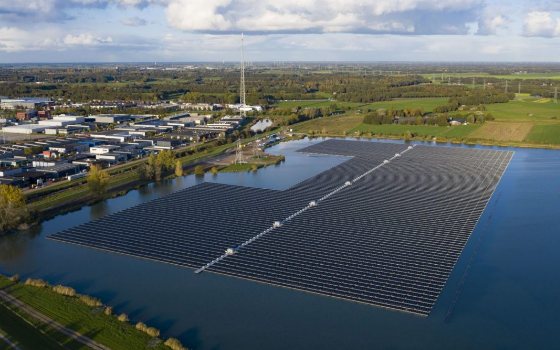In July last year, the South Korean government announced a floating photovoltaic power station project (4.6 trillion Won=3.7 billion US Dollars), which is located on the beach near Saemangeum. The total scale of this solar project reached 2.1 GW.
It is reported that the solar project will be constructed in two phases. The first phase, 1.2 GW is planned to be put into operation in the second half of 2022, and the remaining capacity will be put into operation before 2025. At present, the first phase of the project is selecting investors, and the scale of the first phase may be reduced to 300MW.
"Once completed, it will be a record breaking event." According to researcher Wood Mackenzie, the project is equivalent to 2.4 GW of floating PV installed worldwide by the end of 2019.
Of course, the solar project is also full of challenges. First, developers will need to consider challenges such as seawater corrosion. The communication director of Hanhua Q cells pointed out that the Korean Energy Agency has developed guidelines to protect floating photovoltaic systems from salt water and wind. "They have strict requirements for the approval of floating photovoltaic systems."
Moreover, the financing outlook remains unclear. Chris beadles, senior analyst at IHS Markit, said the expected decline in wholesale electricity prices and renewable energy certificate (REC) prices could pose challenges. "REC prices have fallen by 70% in the past three years due to the decline in natural gas prices and future base load capacity, and wholesale electricity prices are expected to decline." "Development agencies and private companies in the region may set up companies specifically to finance the project," he said.
As with all offshore projects, stakeholder engagement will be a challenge. The Saemangeum jetty, which was completed in 2010, has been a source of environmental controversy. And a campaign is under way to nominate the Western Beach as a UNESCO World Heritage campaign.

Crucially, these challenges are not all. Last September, Kyocera's 13.7 MW floating photovoltaic array at Yamakura Dam in Japan was destroyed by a typhoon. In an investigation, the Japanese Ministry of economy, industry and industry (METI) drew several broad conclusions about the accident, which may be useful to Korean developers. METI said that in its findings, floating PV plants must comply with regional wind load regulations as all such floating solar photovoltaic structures, but there is currently a lack of floating specific photovoltaic structures’ regulations.
The main causes of the Japan accident are anchor failure and the critical relationship between water level and mooring line tension. The South Korean project needs to anchor on the soft and muddy sea bed on the west coast, which is a special consideration for developers.
